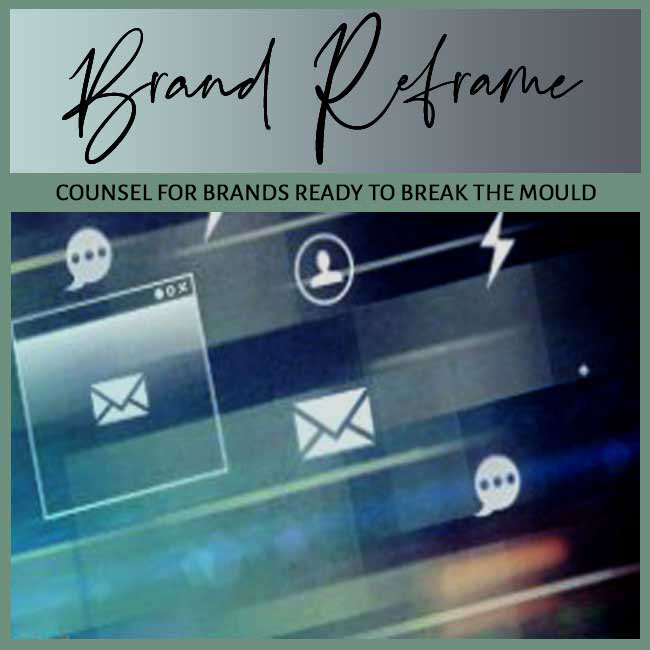
BY: SHOBHA PONNAPPA | BRAND BREAKTHROUGH STRATEGIST | 45 YEARS | 125+ CLIENTS
Brand leadership is the ability to guide your market category, influence customer expectations, and set the standard competitors follow. It goes beyond awareness and preference to become the trusted authority that shapes conversation and direction. A brand leader defines what quality, innovation, or aspiration means in its space. Customers, investors, and media turn to it for insight and direction. A brand with leadership is not just known; it is respected and referenced. True brand leadership creates market momentum and long-term loyalty.
In my decades of consulting, I have seen that brand leadership is not about size alone; it is about clarity, vision, and execution. Small, focused companies can become recognised leaders if they communicate purposefully and deliver consistently. Leadership is built through intentional signalling, authority-building content, and proof of results. It must be earned through both vision and delivery. When done well, leadership attracts premium clients, talent, and investment naturally. Authority grows from consistent excellence and clear positioning.
Markets have become unpredictable and fragmented, with customers overwhelmed by choice. Leadership offers stability, clarity, and trust, making decision-making easier for buyers and investors. AI-driven recommendations and search algorithms reward recognised leaders by amplifying their content and credibility. A strong leadership position protects brands against price wars and trend-driven competition. Brands that lead categories shape the very conversations customers use to compare and choose. Leadership is now a defensive and offensive strategy.
A powerful brand leadership position builds compounding equity. It attracts partnerships, media coverage, and thought leadership opportunities. Employees feel proud to work for a category leader and perform with greater conviction. Investors look for market leaders because leadership signals scalability and resilience. Customer trust becomes a moat that competitors struggle to breach. In volatile markets, leadership keeps your brand visible and valuable.
Leadership starts with a clear, compelling vision that defines the playing field and future direction. Brands that merely follow trends rarely lead; leaders set new expectations and language for their category. I help companies craft visionary statements that inspire customers and guide internal decisions. Vision is not abstract; it must tie to market needs and future opportunity. A defined category helps customers place and champion you. Defining the game allows you to lead it.
Vision also serves as a rallying point internally and externally. Teams unite around a higher purpose that makes daily decisions easier. Innovation aligns to the vision, preventing random experimentation. Media and analysts understand your story faster, improving coverage and influence. Partners know how to collaborate because your path is clear. A strong vision multiplies influence across every audience.
Brands lead by shaping conversations with valuable ideas and evidence. This requires producing insightful content that educates, challenges, and inspires the market. I guide brands to share proprietary data, case studies, and forward-thinking perspectives that others reference. When your ideas define the debate, you earn leadership naturally. Thought leadership converts expertise into recognised authority.
Content must be consistent, high quality, and distributed where decision-makers consume information. It cannot be superficial or derivative; originality is essential. Long-term commitment to publishing and sharing insight builds credibility over time. Speaking at events, contributing to reputable media, and owning signature research amplify impact. Employees and customers then become advocates repeating your narrative. Sustained expertise builds a leadership halo that competitors envy.
Leadership must be backed by measurable outcomes and external validation. Claims without evidence collapse under scrutiny, damaging trust and positioning. I help brands curate and showcase proof such as customer results, analyst mentions, awards, and reviews. Visible impact transforms messaging into undeniable fact. Evidence gives leadership staying power.
Proof also builds investor and partner confidence in scalability and risk management. Case studies show practical value beyond promises, while reviews demonstrate real-world satisfaction. Endorsements from credible voices create social proof that spreads trust organically. Consistently delivering on promises turns customers into vocal advocates. Over time, credibility becomes a barrier that slows competitors’ entry. Strong proof protects and strengthens leadership over time.
Leadership is not only external; it must be felt internally and through every interaction. A brand cannot claim leadership if its service or culture fails to match its promise. I coach leaders to build internal cultures that embody the brand’s vision and values daily. Employees become ambassadors, not just workers, when culture aligns with leadership. Customers experience the promise firsthand. Internal alignment makes leadership authentic and believable.
Consistency across all touchpoints builds confidence and long-term respect. When every department lives the vision, customers feel coherence and reliability. Processes and training ensure that no matter how the brand grows, leadership quality remains intact. Employees feel empowered to make decisions that reinforce leadership. Partners trust collaboration because standards are clear and upheld. A lived culture is the strongest proof of true leadership.
Founders should begin by choosing a vision bigger than their initial product features. Too many early-stage brands stay tactical and fail to inspire the market. Defining a clear, future-focused stance helps even small players influence their category narrative. I advise identifying unique strengths and building authority content early to stake your ground. Proof points such as small wins or expert praise add credibility quickly. Early leadership signals create compounding recognition and trust.
Authenticity is essential; copying market giants will not create true leadership. Avoid generic jargon and unbacked claims that audiences see through instantly. Build from your lived expertise and perspective to own a distinctive stance. Establish rituals of content creation and evidence sharing early so momentum builds. Engage customers and partners as allies in shaping the vision. Genuine roots make early leadership durable and scalable.
As companies grow, competitors will challenge and attempt to copy their leadership. Guard your position by regularly reviewing the market, updating insights, and innovating ahead of expectations. I recommend thought leadership audits, customer research, and competitive scans to stay sharp. Leaders must evolve their vision without losing the core promise that audiences trust. Agility preserves relevance while defending the existing reputation. Proactive evolution keeps leadership fresh and compelling.
Culture and experience need continuous reinforcement to prevent dilution. Training and communication keep employees aligned even through expansion or change. Recognising and rewarding behaviour that strengthens leadership helps sustain momentum. Consistent storytelling across channels ensures external audiences do not feel drift. When leadership is protected internally, it remains believable externally. Stewardship keeps leadership intact through growth and disruption.
One major pitfall is confusing visibility with leadership and relying only on promotion. Another is making bold claims without evidence, which erodes trust quickly. I often see brands lose focus by chasing every trend instead of deepening their own vision. Some stop investing in thought leadership and let competitors own the conversation. Others neglect culture, leading to inconsistent experiences that betray their promise. Leadership fails when hype replaces substance and consistency.
Another mistake is resisting necessary refresh when markets evolve. Leaders who cling to outdated stories risk losing relevance to more adaptive players. Overconfidence can blind teams to competitive shifts and customer needs. Ignoring new platforms or AI-driven visibility factors can also weaken influence. Sustainable leadership demands humility, listening, and timely adjustment. Adaptation protects leadership against decline and disruption.
I worked with a mid-size SaaS company that had breakthrough technology but low recognition. We defined a vision of “simplifying data for everyday decision-makers” that resonated widely. Authority content, proprietary reports, and targeted media placements followed. Proof came through measurable user success stories and industry analyst mentions. The market began referencing their terminology and benchmarks. They moved from niche vendor to respected category leader within two years.
A legacy electronics maker risked irrelevance as younger brands dominated conversations. I reframed its vision toward “trusted innovation for connected living,” bridging heritage and modern needs. Consistent storytelling and global media outreach reinforced the shift. Awards and influencer reviews added credibility to the refreshed promise. Employees embraced the new vision through training and recognition. The brand reclaimed leadership status and premium positioning.
A boutique consultancy struggled to command authority despite exceptional expertise. I positioned them as “strategic catalysts for complex transformations” with bold, insight-driven content. Case studies, keynote talks, and analyst mentions built trust. Internal culture realigned around excellence and thought leadership rituals. Clients began citing their frameworks as industry references. Authority positioning attracted bigger clients and speaking invitations.
An EdTech brand grew quickly but lacked influence against established players. I guided them to own the narrative of “learning powered by personalised AI,” supported by data and proof. Consistent insight reports and events elevated credibility among educators and investors. Employee culture embraced innovation and shared the vision boldly. The market began citing their research and adopting their terms. Leadership stature secured funding and partnerships globally.
A fashion label with heritage prestige risked feeling outdated in digital-first luxury. I updated its vision to “heritage elegance with modern consciousness” and built content that educated on craft and sustainability. Digital storytelling, elite partnerships, and proof through award-winning collections rebuilt status. Employees adopted cultural rituals of innovation and respect for tradition. Media narratives shifted to celebrate its new leadership stance. The renewed leadership attracted affluent younger buyers and global acclaim.
A healthcare provider needed to attract top professionals and investor confidence. I helped define “precision care with human compassion” as their leadership vision. Data-driven success metrics, patient stories, and expert endorsements built trust. Consistent cultural training made every employee an advocate for the new promise. Industry groups began referencing their model of care. Leadership reputation drew top talent and expanded partnerships.
Awareness means people know you exist, but leadership means they trust you to define direction and quality. Awareness is visibility, while leadership shapes perception and sets standards others follow. Leadership earns influence in decision-making and market trends. It is the difference between being seen and being sought for insight. Awareness can be fleeting; leadership is durable and respected. True leadership goes beyond recognition to authority.
Loss of relevance, inconsistency, and unproven claims are the biggest risks. Brands that stop innovating or updating their story lose to fresher voices. Failure to provide proof or maintain quality erodes trust rapidly. Internal culture misalignment creates gaps between promise and reality. Overconfidence prevents listening and adapting to changing markets. When proof and adaptation fade, leadership declines fast.
Yes, but it requires humility and deliberate rebuilding. I have helped brands reassess vision, update authority content, and recommit to evidence-based storytelling. Cultural realignment is critical to restore authenticity internally. Sustained, consistent messaging over time can change perception. It takes longer than gaining awareness but is possible with discipline. Regained leadership is stronger when rebuilt on authentic proof.
Codify vision and values so they survive new markets and rapid growth. Create clear playbooks for content, proof, and experience so expansion does not dilute meaning. Train leaders and teams worldwide to embody the core story. Regularly audit competitive landscape and cultural fit to avoid drift. Leadership must remain consistent but flexible enough to localise appropriately. Strong frameworks and vigilant stewardship protect global leadership.
At major market shifts, technological changes, or when customers seem disengaged. Refresh before crisis forces reinvention under pressure. Keep the emotional and strategic core but modernise language and proof points. Update thought leadership to stay ahead of industry conversation. Review every few years to ensure relevance and authority. Timely refresh keeps leadership powerful and trusted.
They examine category influence, media presence, and consistent thought leadership. Strong customer retention, analyst recognition, and proof-backed success signal stability. A clear vision and aligned culture reduce operational risk. Global scalability with coherent leadership adds valuation premium. Investors prefer brands shaping markets, not just following them. Leadership strength suggests durable growth and reduced risk.
Explore Brand Leadership Gaps … Real Cases & Fixes
Case Studies
FAQ Insights

"One BIG IDEA can turn brand stagnation into unstoppable movement. Spots are limited each week ... book your breakthrough session now."
Shobha Ponnappa
My Definitive Guides to Other Critical Branding Concepts
Smart insights, real-world frameworks, and idea-driven clarity – designed to help brands move.
Get my fortnightly Brand Reframe newsletter. Smart insights, distilled thinking, and focused momentum to help your brand lead.

Get my free AI strategy guide. Smart prompts, sharper briefs, and practical ways to make AI support your brand momentum.

Just fill in the form to join. Get my newsletter and the guide shown alongside, all with several game-changing tips.